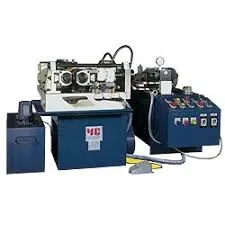
-
 Afrikaans
Afrikaans -
 Albanian
Albanian -
 Amharic
Amharic -
 Arabic
Arabic -
 Armenian
Armenian -
 Azerbaijani
Azerbaijani -
 Basque
Basque -
 Belarusian
Belarusian -
 Bengali
Bengali -
 Bosnian
Bosnian -
 Bulgarian
Bulgarian -
 Catalan
Catalan -
 Cebuano
Cebuano -
 Corsican
Corsican -
 Croatian
Croatian -
 Czech
Czech -
 Danish
Danish -
 Dutch
Dutch -
 English
English -
 Esperanto
Esperanto -
 Estonian
Estonian -
 Finnish
Finnish -
 French
French -
 Frisian
Frisian -
 Galician
Galician -
 Georgian
Georgian -
 German
German -
 Greek
Greek -
 Gujarati
Gujarati -
 Haitian Creole
Haitian Creole -
 hausa
hausa -
 hawaiian
hawaiian -
 Hebrew
Hebrew -
 Hindi
Hindi -
 Miao
Miao -
 Hungarian
Hungarian -
 Icelandic
Icelandic -
 igbo
igbo -
 Indonesian
Indonesian -
 irish
irish -
 Italian
Italian -
 Japanese
Japanese -
 Javanese
Javanese -
 Kannada
Kannada -
 kazakh
kazakh -
 Khmer
Khmer -
 Rwandese
Rwandese -
 Korean
Korean -
 Kurdish
Kurdish -
 Kyrgyz
Kyrgyz -
 Lao
Lao -
 Latin
Latin -
 Latvian
Latvian -
 Lithuanian
Lithuanian -
 Luxembourgish
Luxembourgish -
 Macedonian
Macedonian -
 Malgashi
Malgashi -
 Malay
Malay -
 Malayalam
Malayalam -
 Maltese
Maltese -
 Maori
Maori -
 Marathi
Marathi -
 Mongolian
Mongolian -
 Myanmar
Myanmar -
 Nepali
Nepali -
 Norwegian
Norwegian -
 Norwegian
Norwegian -
 Occitan
Occitan -
 Pashto
Pashto -
 Persian
Persian -
 Polish
Polish -
 Portuguese
Portuguese -
 Punjabi
Punjabi -
 Romanian
Romanian -
 Russian
Russian -
 Samoan
Samoan -
 Scottish Gaelic
Scottish Gaelic -
 Serbian
Serbian -
 Sesotho
Sesotho -
 Shona
Shona -
 Sindhi
Sindhi -
 Sinhala
Sinhala -
 Slovak
Slovak -
 Slovenian
Slovenian -
 Somali
Somali -
 Spanish
Spanish -
 Sundanese
Sundanese -
 Swahili
Swahili -
 Swedish
Swedish -
 Tagalog
Tagalog -
 Tajik
Tajik -
 Tamil
Tamil -
 Tatar
Tatar -
 Telugu
Telugu -
 Thai
Thai -
 Turkish
Turkish -
 Turkmen
Turkmen -
 Ukrainian
Ukrainian -
 Urdu
Urdu -
 Uighur
Uighur -
 Uzbek
Uzbek -
 Vietnamese
Vietnamese -
 Welsh
Welsh -
 Bantu
Bantu -
 Yiddish
Yiddish -
 Yoruba
Yoruba -
 Zulu
Zulu
The Most Effective Types of Thread Rolling Techniques for Optimal Manufacturing Results
The Best Types of Thread Rolling A Comprehensive Overview
Thread rolling is a highly efficient and widely used manufacturing process in which threads are formed on cylindrical parts by deforming the material rather than cutting it. This method boasts several advantages, including improved mechanical properties, reduced waste, and enhanced precision. Understanding the best types of thread rolling processes can significantly impact production efficiency and the quality of the final products.
Thread rolling can primarily be categorized into two types flat die rolling and planetary rolling, each of which has distinct characteristics and applications.
Flat Die Rolling
Flat die rolling is one of the most common methods for thread rolling. In this process, two flat dies with the corresponding thread profile are used to produce threaded fasteners. The workpiece is fed between the dies where it is rotated and pressed simultaneously. As the dies move, they progressively deform the material, creating threads that are highly precise and uniform.
One of the primary advantages of flat die rolling is its ability to produce threads with excellent surface finishes and enhanced fatigue strength. The cold working nature of the process refines the grain structure of the material, resulting in higher tensile strength and toughness. This method is ideal for producing a wide range of fasteners, including screws, bolts, and nuts, in materials such as steel and aluminum.
Planetary Rolling
best types of thread rolling

Planetary rolling is another advanced thread rolling technique that employs a set of planetary gears. In this method, the workpiece is rotated along with the gears while being rolled between two or more forming tools. This results in a more uniform distribution of pressure and permits the creation of complex thread profiles.
Planetary rolling is particularly advantageous for applications requiring high precision and intricate designs. It is often used in the production of specialized components in the automotive and aerospace industries. The process also allows for the rolling of threads at various angles and pitches, making it versatile for different product requirements.
Choosing the Right Method
When selecting the best type of thread rolling process, several factors should be considered, including the material being used, the thread specifications, production volume, and cost efficiency. Flat die rolling is typically preferred for simpler, high-volume production due to its straightforward setup and efficiency. Conversely, planetary rolling is more suited for complex designs and lower production runs where precision is paramount.
Additionally, advancements in technologies such as computer numerical control (CNC) have further enhanced the capabilities of thread rolling. CNC technology allows for automatic and precise adjustments in the rolling process, improving productivity and ensuring consistency across mass production.
Conclusion
In conclusion, thread rolling is a vital process in the manufacturing industry, providing significant advantages in producing durable and precise threaded components. The choice between flat die rolling and planetary rolling should be guided by the nature of the application, material properties, and design complexity. As manufacturing processes continue to evolve, the incorporation of advanced technologies will likely enhance the efficiency and capabilities of thread rolling methods, ensuring that they remain integral to modern production systems. Understanding these processes will enable manufacturers to optimize their operations and produce high-quality components capable of meeting competitive market demands.
